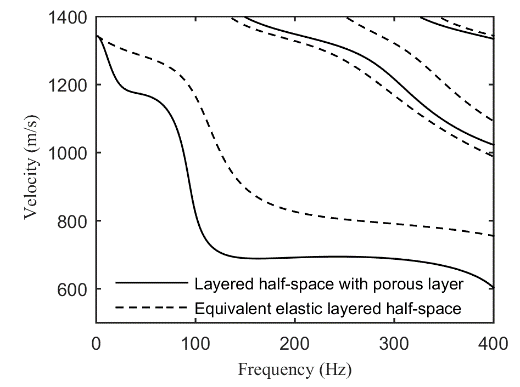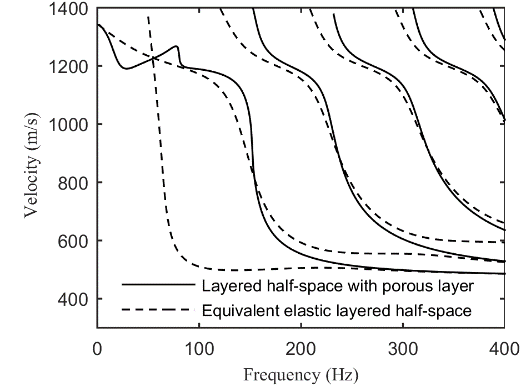Porous formations, a kind of formation containing pores (voids) typically filled with a fluid (liquid or gas), are common in oil and gas exploration. People usually want to know the detailed information of the porous media’s parameters.
The pervious exploration method by Rayleigh waves, a type of surface acoustic wave that travel on solids, are based on the model of layered half-space that totally consisting of elastic solid media. There would be errors, even mistakes, in the results of the analysis and interpretation of layered half-space with porous media, if the elastic solid model is used.
For getting close to the practical conditions and gaining accurate parameters of actual formations, the porous layers should be considered in the research of the excitation and propagation mechanism of Rayleigh waves in layered half-space. Besides, the difference of the characteristics of Rayleigh waves should be investigated.
Researchers from the Institute of Acoustics of the Chinese Academy of Sciences have derived the dispersion function of Rayleigh waves in a layered half-space system with a porous layer at different depths by the transfer-matrix method. The problem of nondirectly transferred variables owing to the different orders of the matrices is solved, and the computational model of Rayleigh waves in porous media is optimized.
To solve the significant digit overflow in high frequencies, theses researchers have also derived a new fifteenth-order square matrix to eliminate the cubic terms. Besides, they propose a bisection algorithm in the complex plane to improve the computational efficiency.
Fig.1 shows the comparison of the dispersion curves of Rayleigh waves in different models with porous layer on the surface. This suggests that the dispersion is strongly affected when the porous layer is at the top and less when it is in the middle. When the porous layer is at the bottom, there is hardly any effect. The results also suggest that this method will improve exploration results that use Rayleigh waves.


a: velocity-increasing model; b: low velocity interlayer model
Fig.1 The comparison of the dispersion curves of Rayleigh waves in different models with porous layer on the surface (Image by YAN Shouguo et al.)
This research has described the dispersion of Rayleigh waves in porous layered half-space media and investigated the excitation and propagation of Rayleigh waves in porous layers. Moreover, an optimization method is proposed to improve the precision in the transfer-matrix method at high frequencies.
In practical exploration, the earth’s surface could be loose and close to porous media. Hence, it should be paid attention to the effect of porous media when using Rayleigh wave exploration. Otherwise, if the velocity distribution is the only thing that considered, it may be feasible to describe the multi-layered half-space by the popular model of elastic media.
Reference:
YAN Shouguo, XIE Fuli, LI Changzheng, and ZHANG Bixing. Dispersion Function of Rayleigh Waves in Porous Layered Half-space System. Applied Geophysics (Vol. 13, No.2, 2016, pp. 333-342). DOI: 10.1007/s11770-016-0536-2
Contact:
YAN Shouguo
Institute of Acoustics, Chinese Academy of Sciences, 100190 Beijing, China
Email: yanshouguo@mail.ioa.ac.cn


